
How the EU should co-ordinate an end to the COVID-19 lockdown
European governments hope that contact tracing apps can allow them to ease lockdowns. But much work must be done at both national and EU level before restrictions can be eased.
There are growing calls for lifting lockdowns across European countries. Austria and Denmark have already announced plans to open schools. But ending lockdowns without mass testing and contact tracing firmly in place will be very dangerous, as COVID-19 is far more infectious than its predecessors, like SARS. Even with rigorous testing and contact tracing, some curbs on social contact will be needed, and lockdown measures will need to be eased step by step. Once it has been shown that restrictions can be eased while containing the spread of the disease, there will still need to be co-ordination at the EU level to allow travel between member-states. Without trust in each other’s exit strategies, countries will be wary of opening up.
Mass testing and contact tracing apps must be in place before lockdowns can be eased in Europe - and the EU has an important role to play.
COVID-19 is particularly infectious because people without symptoms can still spread the disease. The 2003 SARS outbreak was relatively easy to contain because there was no known transmission of the disease by asymptomatic or pre-symptomatic patients. Pre- or asymptomatic cases of COVID-19, by contrast, are infectious, which has meant that they have infected many other people before they are isolated.
There are three ways to quash outbreaks of disease if pharmaceutical treatment or vaccines are not available, all of which involve limiting contact between infected people and everyone else. One is case identification and isolation. The second way is general hygiene measures, such as hand-washing, the use of facemasks and decontamination of surfaces that people touch. The third way is to impose general social distancing, and in extremis, lockdowns, to reduce contact between all members of society.
Estimates from Imperial College London show that tough lockdowns have been necessary to curb the spread of the virus. More moderate measures, such as social distancing, voluntary self-isolation by symptomatic people and the closure of schools and banning of public events, have not been sufficient to contain the pandemic. R is the number used by epidemiologists to gauge a disease’s infectiousness: it is the number of people that are on average infected by one person with the disease. Across European countries, R without intervention is remarkably similar – around 4 (although a recent estimate by US researchers put it even higher, at around 5.7). Only lockdowns brought it down to around 1. A number below 1 is needed to reduce the number of people with the disease. (Charts 1 and 2 show estimates of the extent to which Germany and Italy reduced R by different measures.)
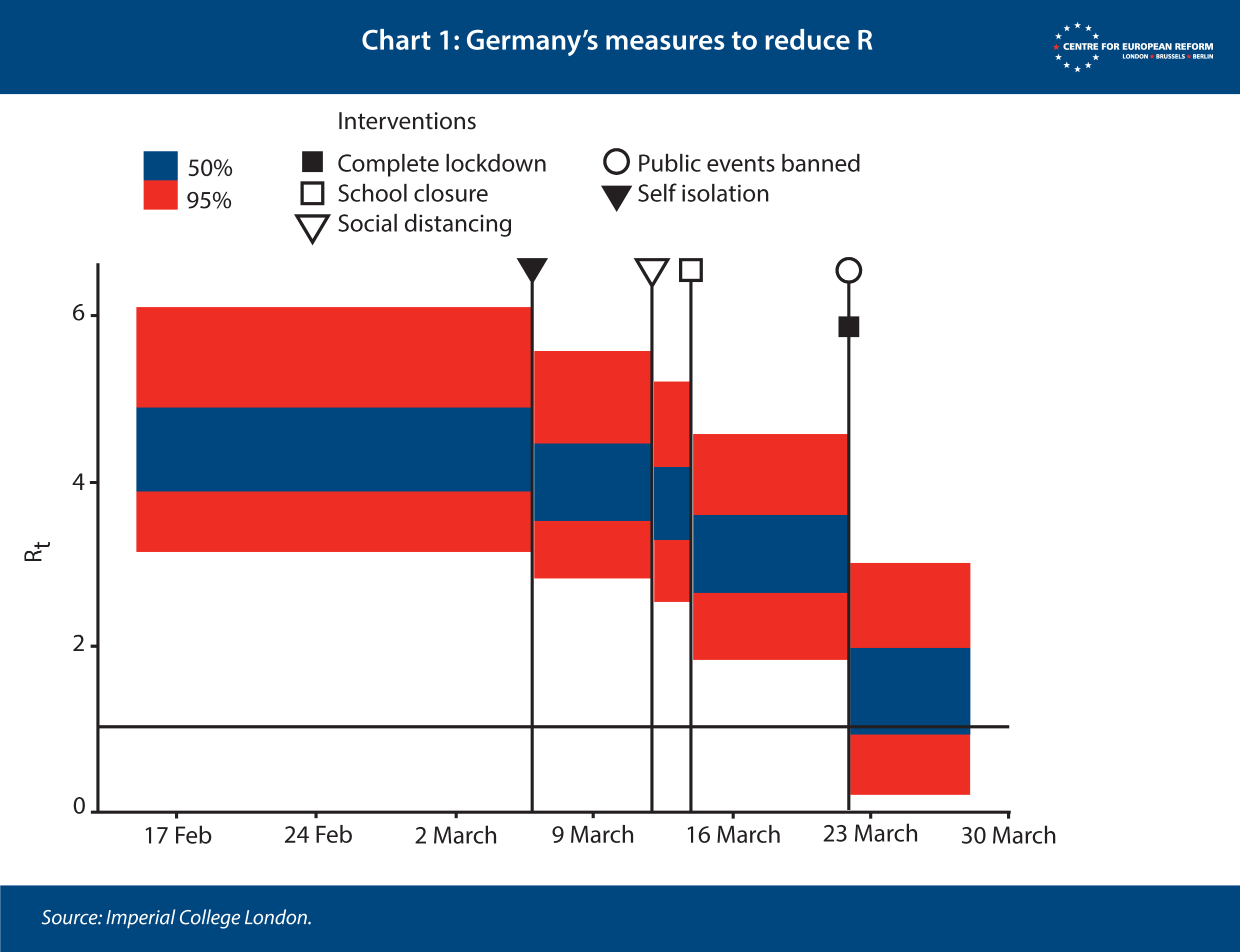
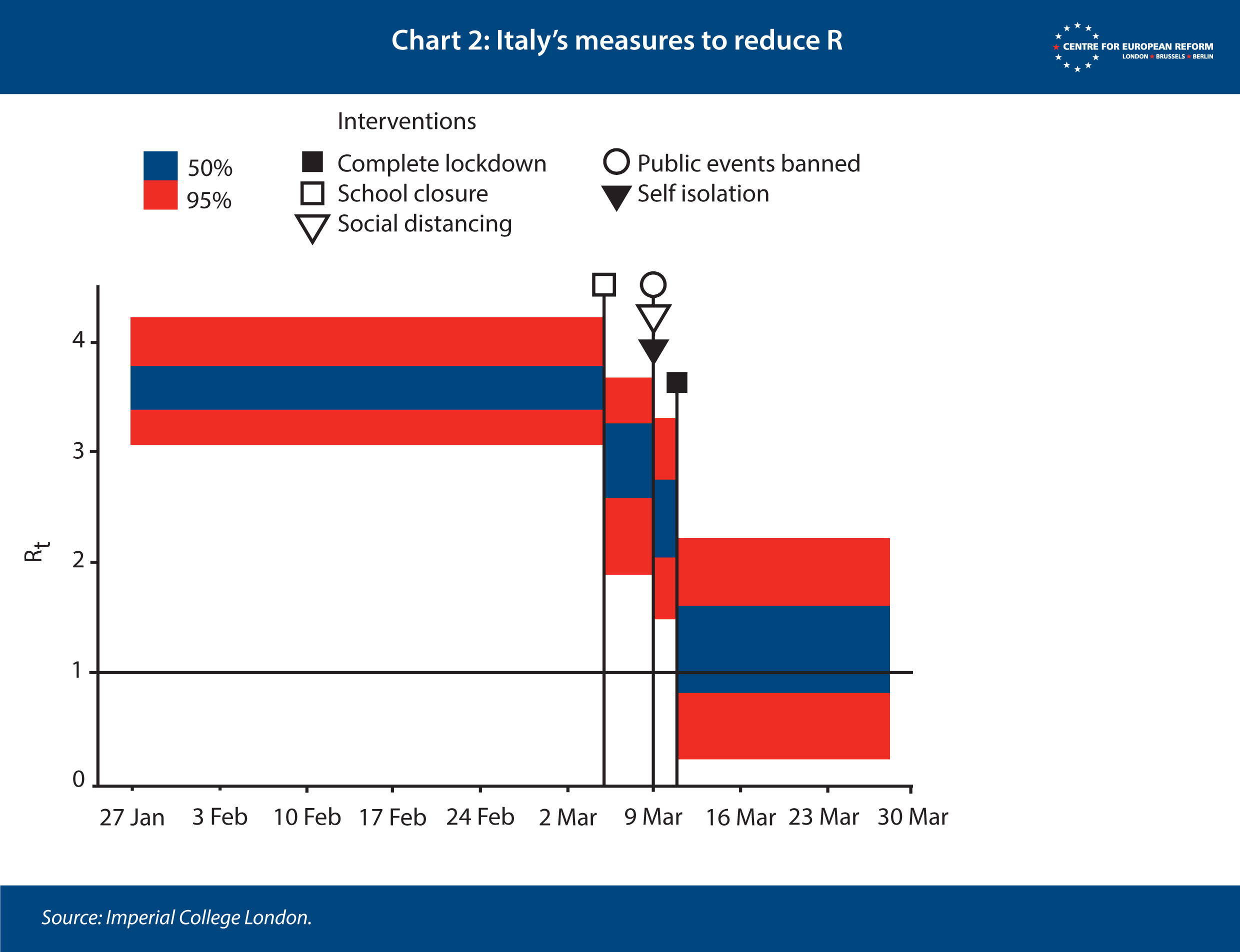
The number of deaths from COVID-19 lags behind the number of infections, because the disease takes several weeks to kill people in countries with advanced healthcare. After three to four weeks of lockdown, the number of deaths per day has finally started to fall in Italy and Spain. But both countries are far from ‘herd immunity’ – the position where there are too few susceptible individuals left in the population for the virus to find enough hosts to continue to spread. According to Imperial College estimates, only 15 per cent of Spanish people, and around 10 per cent of Italians have been infected: the number in other countries is far lower. This is consistent with a recent study in Germany, where 15 per cent of the residents of a badly hit small town, Gangelt, were found to be infected. And the share of the population that has been infected elsewhere is far lower, meaning most of the public remains susceptible. Without systems to effectively identify and isolate cases, easing the lockdown will result in another wave of infection, and thus, another lockdown. The second wave of the 1918-19 flu pandemic was more deadly than the first.
European governments must trust each other’s COVID-19 post-lockdown strategies for travel restrictions to be lifted, which implies an important role for the EU.
The alternative to the blunt instrument of full lockdown is more targeted case isolation. As noted above, the fact that people are infectious before they show symptoms makes this strategy difficult. Contact tracing apps offer a way forward: they have been used in China, Singapore and South Korea, and many European governments have announced that they are developing their own versions. Contact tracing systems work as follows. People download a contact tracing app onto their smartphone that registers physical proximity to other people who carry the app. The app works via Bluetooth, possibly in combination with GPS location data. The app registers contacts with other phones that are close enough to allow infection to happen. When someone develops symptoms, they are tested. If the person tests positive, they self-isolate, and public health authorities ask them to inform contacts who came close enough to potentially become infected through the app. Those contacts then self-isolate, their contacts are informed, and so on. The app would not disclose who was sick to the government or app users: it would just post an alert to self-isolate and get tested.
Contact tracing apps allow pre-symptomatic people to be more rapidly isolated. Researchers at the University of Oxford, led by Luca Ferretti, have shown that automated contact tracing is much more effective than manual contact tracing. If contact tracing and isolation takes three days, R will be greater than 1, whereas if it is less than a day, R falls below 1. And the system will work better if all contacts that have been asked to self-isolate are tested, because they will be more likely to comply with quarantine. If they are asked by the app to self-isolate, but have no symptoms, they may decide to take the risk in order to be able to continue to work.
How effective must the system be? According to the Oxford group’s simulations, around 55 per cent of people must have the smartphone app in order to curtail the spread of the virus. Since elderly and at-risk people will have to continue to isolate, and most children do not have smartphones, that means that around 80 per cent of all people in Europe who own a smartphone will have to use the app for the system to work. This suggests that it may be difficult to achieve the numbers required without the app being mandatory.
China’s easing of restrictions offers some good and bad lessons for European policy-makers. China appears to have successfully curbed its outbreak, with the number of new cases and deaths having fallen substantially. (While some are sceptical about China’s data on infections and deaths, lockdown measures have been lifted, which suggests outbreaks are under control for now.) In China, an app is compulsory to leave the home. People’s privacy is barely considered, with data on individuals’ movements collected on a central database. That data is not anonymised. But even there, other containment measures have been necessary. Restaurants have re-opened. So have schools in communities that are free of the disease. But universities remain closed, because students come from all over the country; gyms and cinemas are also closed and mass gatherings are not allowed; and temperature checks are conducted at subway entrances and workplaces. People are allowed to travel between regions but have their health status checked. And anyone arriving on an international flight is quarantined for two weeks.
European countries, being liberal democracies, will probably find it more difficult to end lockdowns quickly. The high degree of economic integration between member-states means that co-ordination at the EU level will be needed to allow the economy to get back to some degree of normality before a vaccine is developed. Tourism is a large part of southern Europe’s economies, especially in the summer months, and continued travel restrictions will be damaging.
Contact tracing apps will have to be ‘interoperable’ (they will have to recognise contacts from different countries and from different types of smartphones) and they must safeguard privacy, not least because people will not use them if they do not. On April 11th, Apple and Google announced they would work together to ensure that all smartphones would be updated to allow interoperability between devices that run with their respective operating systems (iOS and Android). That way, an Android Bluetooth device would be recognised by an iOS device. (The process is likely to work like email, which is fully interoperable across different apps and operating systems.) This interoperable system will allow different European governments’ apps to talk to one another. The EU has an important role to play in ensuring that this happens. If European apps are incompatible, restrictions on travel will have to continue, because member-states will fear that travellers returning home may bring the disease with them.
The Bluetooth apps are mostly ready to go, according to conversations I have held with software developers. Singapore’s ‘TraceTogether’ app (which is already being used by 20 per cent of the city-state’s citizens) has been the model, because it relies on Bluetooth, which is the easiest way to ensure contact tracing is anonymised. But more work is needed on running the servers that store contact data. Apps will work better if Bluetooth data is supplemented by GPS location data, and while it is possible to ensure that the latter is anonymous, it will take longer to develop the necessary software and servers, which will require strict regulation and oversight. The EU should ensure that different apps fulfil privacy requirements. As noted above, it may be necessary to make app use mandatory to achieve the number of users required, and the only way that can be sustainable politically is if privacy is watertight.
Contact tracing only works if it is done in combination with mass testing, and given the lack of testing capacity in many European countries, it will be several weeks before these apps can be rolled out in many member-states. Governments must not only ensure that cases are isolated but must have timely, accurate data on local outbreaks, in case lockdown measures need to be reapplied in COVID-19 hotspots. By co-ordinating procurement, the EU can help to ensure that all member-states have the testing capacity needed and effective systems to track the disease in local areas. Governments will only be willing to ease travel restrictions between member-states if they know that their peers are containing outbreaks effectively.
On their own, case isolation and contact tracing may not be sufficient to contain the disease, because we still do not know enough about how infectious it is or how it is spread. European countries that are ready to start easing lockdowns will be important sources of data about the effectiveness of different measures. Once Austria reopens schools, for example, it will be possible to estimate how much that raises R. And if apps prove to be ineffective, perhaps because take up is too low or because more infections arise from asymptomatic people that are not tested, governments will be able to see quickly that they must balance their use with other measures. The EU can help to channel useful information to other member-states who are still in lockdown.
To avoid further mass outbreaks, member-states must first continue to build testing capacity and develop contact tracing systems. Only then can they slowly ease restrictions, in order to determine the effects of different interventions on infection rates. The EU can help to ensure that all member-states have the tests and technology to be able to do so, exchange information between them about what works and what does not, and ensure that citizens’ privacy is respected. Without a careful, co-ordinated easing of lockdown measures, travel restrictions will continue into the summer, which will make it harder for Europe’s economy to recover, especially in southern member-states. But it is better to delay, to build capacity and knowledge, than rush to the exit door.
John Springford is deputy director of the Centre for European Reform.

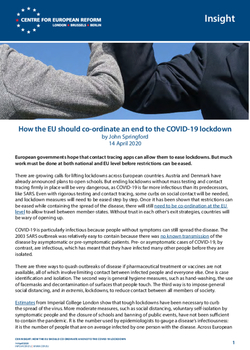
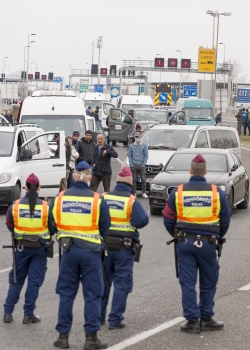
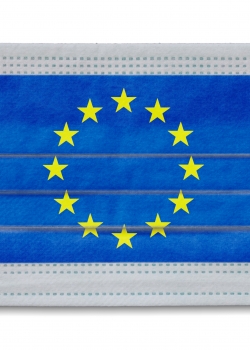
Add new comment